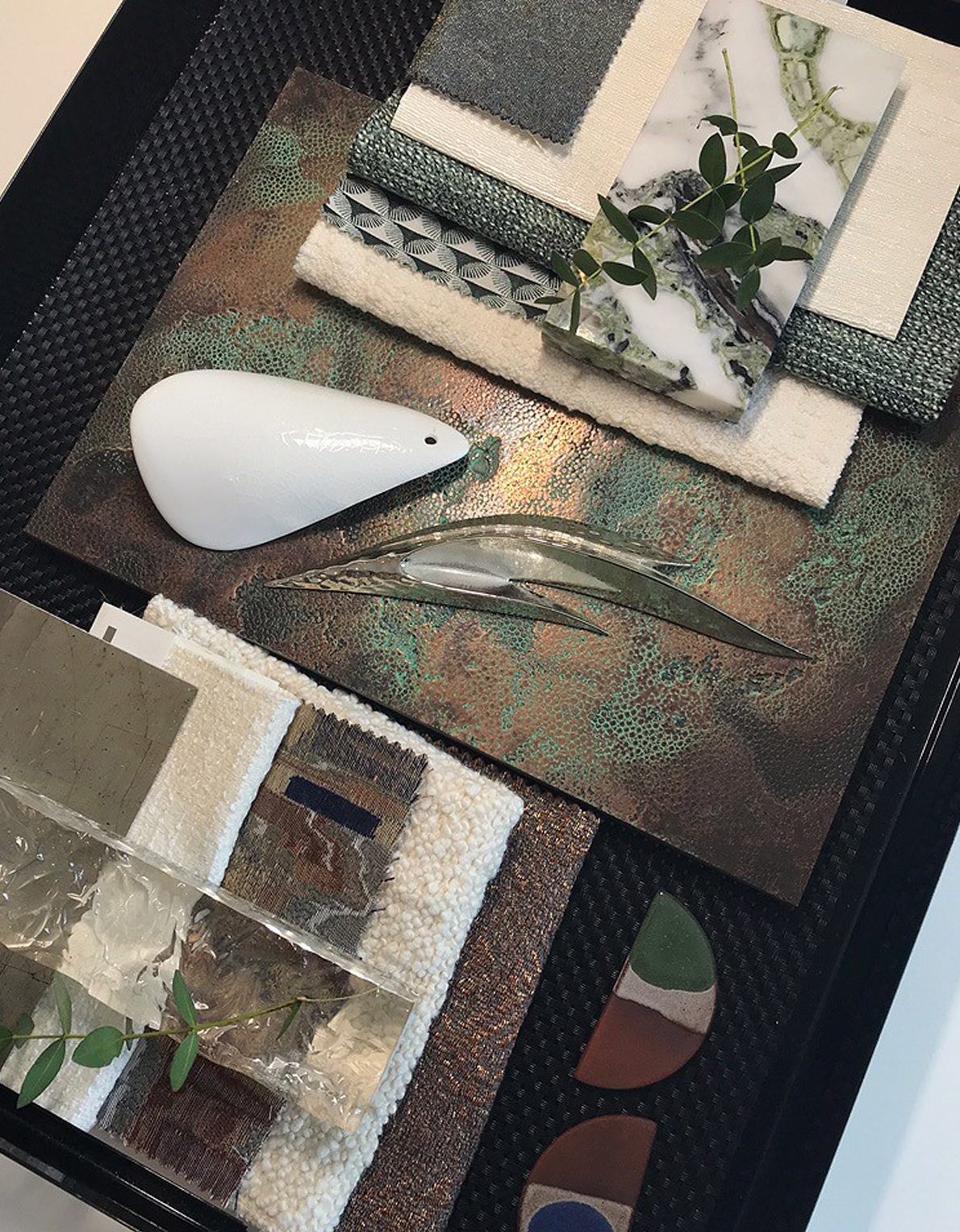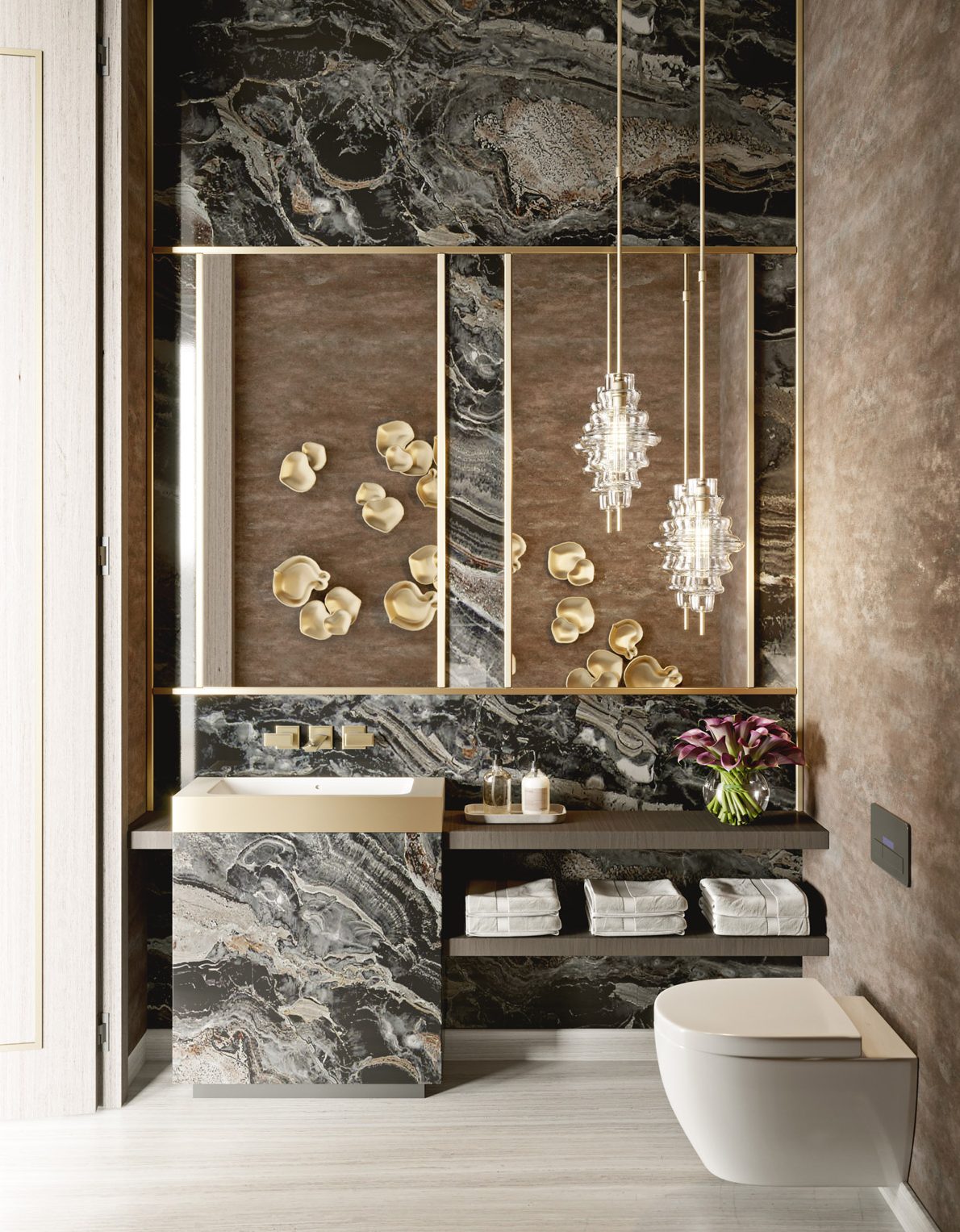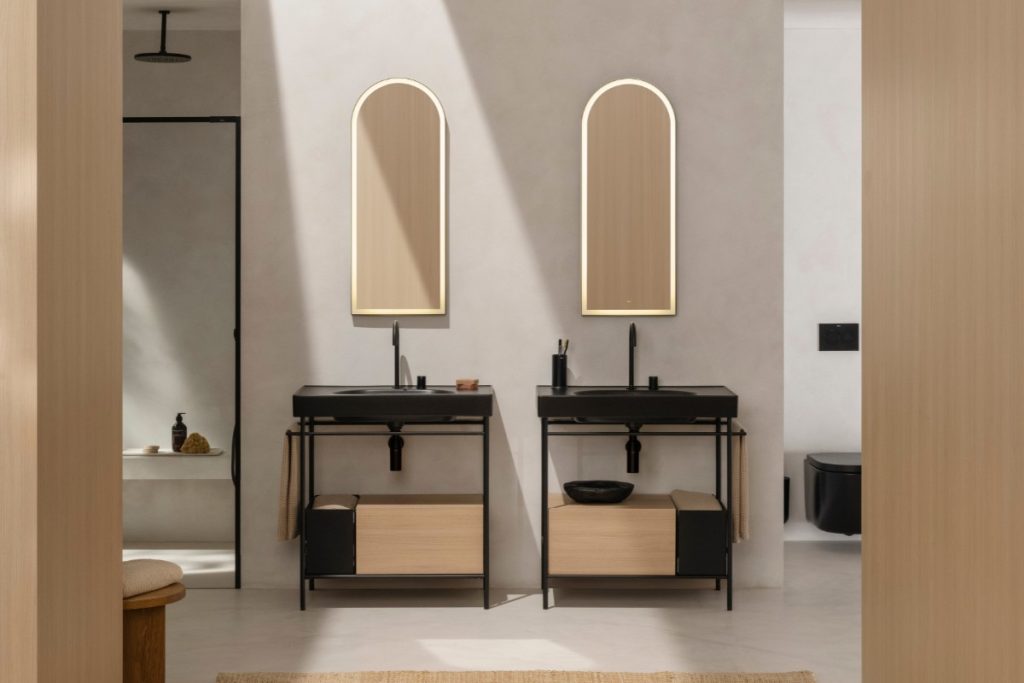 16th July 2019 | IN EXPERT INSIGHT | BY SBID
16th July 2019 | IN EXPERT INSIGHT | BY SBIDThis week SBID interviewed Charu Gandhi, Founder and Director of the award-winning luxury interior design studio, Elicyon. Charu talks about her feelings of disconnect between architectural training and architecture in practice; particularly, how this influenced her decision to pursue a successful career in interior design. From just a childhood vision to become an Architect, Charu now shares her professional insight into the industry with concerns for the issue of waste within the interior design profession as a whole.
Can you describe your current job?
I am the Founder and Director of interior design studio, Elicyon. Based from our studio in Kensington Village, I lead an expert team of 21, working across ultra-luxury developments and private homes in the UK and around the world.
What is your background and how did you get into interior design?
I originally trained as an architect at the Architectural Association in London, which led to seven years of formal training. I went on to work at Allies & Morrison Architects in 2006, working with luxury residential clients, as well as contributing to large-scale projects like the Doha National Library and the London Olympics Masterplan.
Whilst the allure of architecture was certainly all-consuming during my training, in practice the vocation didn’t really give me the satisfaction I had expected. I was critical of the fact that everything had to be post-rationalised. Everything had to have a gravity to it, which I feel interior design doesn’t overly do. It doesn’t complicate. In architecture, you can’t say something is beautiful for the sake of being beautiful, it’s too blasé and surface-level and architecture tends to think more intellectually than that.
At that point, I thought I would leave design and become an investor. I was planning on going to business school, and I got into a school in France, but at the same time a friend of mine who worked at Candy & Candy had rediscovered her love for design and convinced me to apply. There, I worked on the private commissions team on projects in India and Africa, as well as residences in the prestigious One Hyde Park development in London. A connection at One Hyde Park was the catalyst for my decision to start my own interior design business, when I was offered a refurbishment project in the development.

Describe an average day in your job role..
Every working day is completely different, which I love but which can also be challenging in terms of time and diary management. During a ‘normal’ day, I catch up with the team to discuss ongoing or upcoming projects; I will then usually have one or more meetings with our suppliers in our new studio, going through their latest products and discussing how they could work for a project. Clients also love coming into our new studio as we have a very impressive sample library where they can take the time to look through all of our exquisite stone samples, carpet, furnishing fabrics and wall coverings. I will sometimes have a dinner or after-work function, but I do try not to go to more than two evening work events each week so that I can spend quality time with my family in the evenings.
Which elements of your profession do you enjoy the most and/or find the most rewarding?
Our work is all about storytelling and taking the client on a journey. We want them to fall in love with design, with the craft, to have a sense of self-actualisation – when this is achieved on a project, it is hugely rewarding.
I also greatly enjoy working with our esteemed and trusted suppliers. The craftsmen and artisans that we work with – some of the world’s leading glass makers, crystal makers and innovative producers of plaster work, finishes and furniture – are my single biggest inspiration. Understanding how something is put together, the process it undertakes, the precision of the craftsmanship, lights a creative fire for me.


Is there anything new you are excited to be working on?
I am really looking forward to completing our first hospitality project – a boutique hotel in Sri Lanka – as well as completing our stunning penthouse project in Dubai later this year. We are also excited to be working on our second project in China – an incredible residential development.
In London, we are working on a number of very exciting projects including a lateral duplex apartment in Knightsbridge for a private client. Here, we are reinstating period features whilst creating a contemporary family home. Another private client project in Knightsbridge on Ennismore Gardens also involves working in a period environment – the two apartments we are designing are both set within a listed building. One is a duplex apartment with a beautiful feature staircase and the other is a large lateral apartment with expansive windows and stunning ceiling heights of 4 meters.
We are also working in the super prime Clarges development in Mayfair – our design for one of the apartments within the building celebrated the Art Deco theme of the wider scheme but adds a modern twist and focuses heavily on artwork with prints, photography and sculptural works dotting the property.
Whatever comes our way, we’ll continue our adventure with design, beauty, craft and innovation that enables us to take clients on an incredible journey of exploration and enjoyment. As we remain a boutique studio, it’s a pleasure to work with our select few discerning clients who are ready to go on the adventure with us.
What do you find the most challenging aspects of your job?
I always say that our biggest challenge is the next one. We are always striving to learn, grow and push the boundaries so that both our skills as designers and our projects are in an ever-evolving state.
I am constantly developing as a designer, a studio lead and businesswoman, and am very self-critical with both myself and the team on any lessons learnt. We are always questioning how we could do something more special, more groundbreaking with each project.

What do you wish you knew before working in the field?
I had already trained as an architect when I made the very conscious decision to move into the interior design industry, so I felt quite well-informed about the filed at that stage. However, before going into architecture, I was definitely unaware of how much the work of an architect is influenced by governmental legislation, policies and funding, as well as a myriad of conflicting stakeholders. Luckily, during my training I studied at the Architectural Association in London which fostered much more of a creative, idealist and visionary concept of architecture, which I rediscovered when I moved into interior design. I knew then that maintaining a strong sense of idealism was important in my career.
What would you tell your younger self if you had the chance?
I would have told myself that resilience and developing ‘scar tissue’ from enduring a few knocks along the way comes with time. I would have allowed myself to be a paranoid optimist sooner – which is what I am now. It means I am really particular about the design and execution work in the studio. I would have been brave enough to surround myself from the start with a team of people who are better than me. This can seem very scary at first, but it’s one of the most important things I’ve learnt in running a studio. When I come to self-reflect, I often refer to a line from a poem by Maya Angelou:
“Do the best you can until you know better. Then when you know better, do better.”
What has been your favourite project to work on?
All of our projects are significant to me, each for a different reason. We recently completed a three bedroom apartment in One Hyde Park in Knightsbridge, London – our seventh project there. The building holds a special meaning for me as it’s where Elicyon began – we did our first ever project there in 2014. I enjoy making each apartment we work on at One Hyde Park unique, even though the spatial environment and layouts are similar.
Having grown up in India and retaining strong roots, working in my home country had been a long-cherished ambition that I achieved through working on a new, luxury residential development in Mumbai. It was wonderful to combine my knowledge of the city, culture and way of living to the project with a strong influence from my design studies, which are European in origin. The project’s vision represents a moment in my personal design journey; a confluence of east and west, celebrating both without detracting from either.

What do you think is the biggest problem the interior design industry faces?
An article in the FT back in 2018 reinforced my view that we need to lend some common standards in our pricing models for the sake of clients. The article was titled ‘how to see through the smoke and mirrors of architects’ and designers’ fees’ and it very succinctly described what we often see; a lack of transparency, clarity and consistency which leaves our client base feeling baffled, unsure and in the worst case, cheated.
A shared sense of self belief so that we price our fees better and also pay our staff better. I hate hearing of a young designer who has invested into their education only to be told they have to work for free to get a foothold into the industry – that has to stop.
I also think we need to address the issue of waste within interior design. So often, designers sulk when a client wants to reuse or re-purpose an existing piece of furniture or a fitting, but I think this presents an excellent opportunity to restore and respect older, used pieces, rather than just throwing them away and starting afresh. It can take a lot more time and effort to do this, but it is hugely important. For example, when taking out an existing kitchen or bathroom, we try to salvage as much as possible to use in the new design or ask the owner if we can auction or donate the parts so that they are reused. I’ve never had a client say no to this when asked. When we build, we also build to last – longevity is a key part of our design process.
Which people do you admire the most in the industry and why?
When I was a child in India, my parents decided to build us a new home and worked with architect Sujata Kohli. I would watch Sujata walking around onsite, instructing construction teams and implementing her vision and I was very enamoured by her. For me, she combined a scientific, analytical mind with creativity and this became my goal for my future career.
Sujata is still my mentor and someone I greatly admire. She encouraged me to attend the Architectural Association in London, which was the beginning of my training and career, so she has played a big part in my life.
If you were inspired by Charu’s story and want to learn more about the role of an interior designer, click here.



